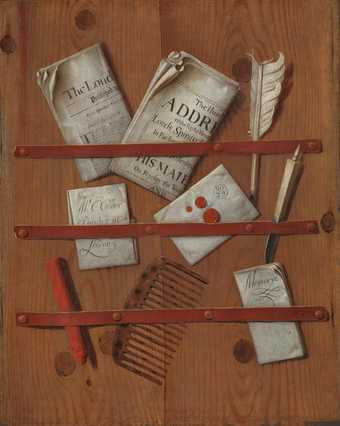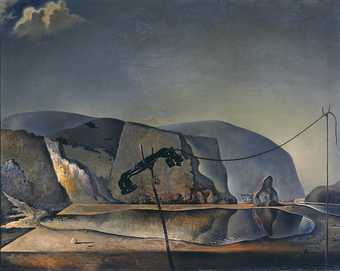
Salvador Dalí
Metamorphosis of Narcissus
(1937)
Tate
© Salvador Dali, Gala-Salvador Dali Foundation/DACS, London 2024
The term is often used specifically in relation to the decorative schemes used in buildings in Baroque art, especially ceiling paintings, in which the artist uses perspective and foreshortening to create, for example, the illusion that the ceiling is open to the sky and peopled by figures such as angels or saints.
High levels of illusionism are also typically found in seventeenth-century still life paintings, for example in the work of Edward Collier. Such effects are also sometimes referred to as ‘trompe l’oeil’, a French phrase meaning ‘deceives the eye’.
In modern art theory illusionism has been frowned upon on the grounds that it denies the basic truth of the flatness of the canvas. However, surrealist artists such as Salvador Dalí and René Magritte have used it to great effect to evoke the alternative world of the unconscious mind.



